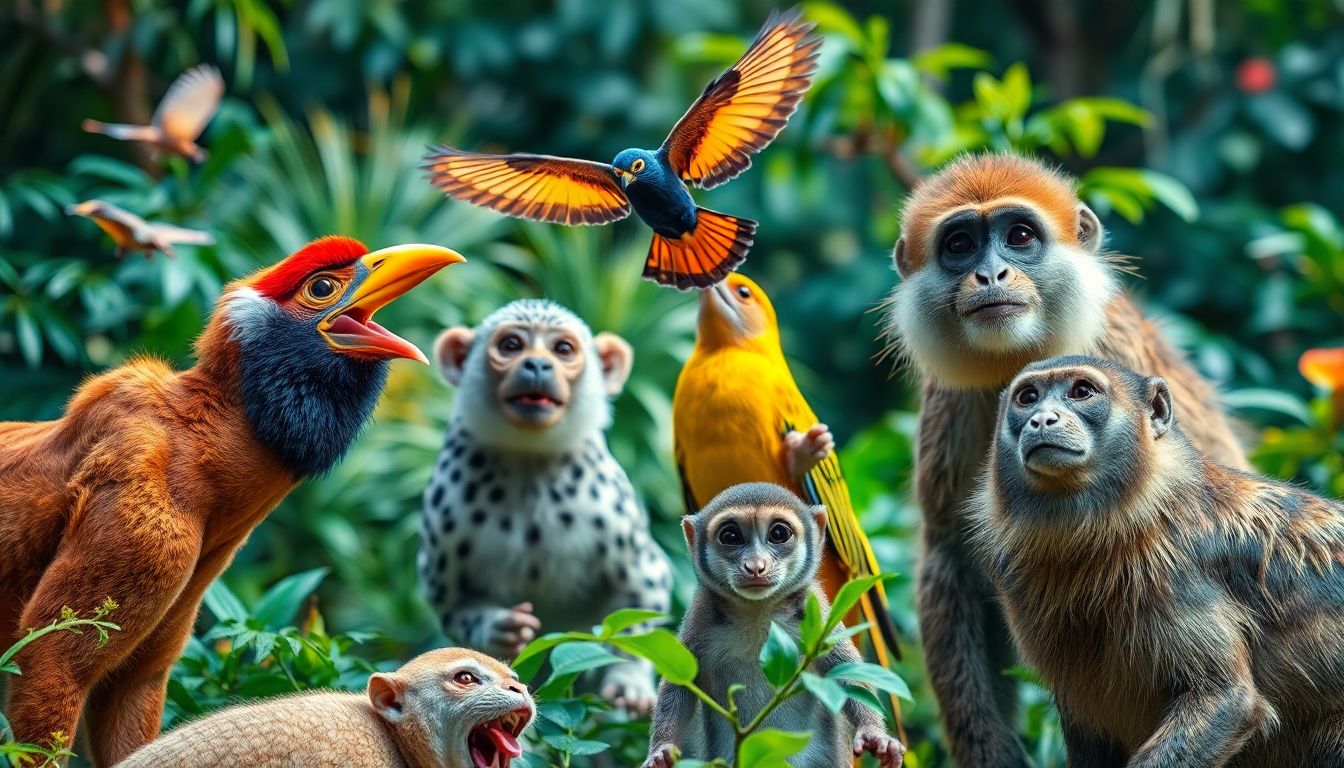
Did you know there is a creature that can survive in space? The animal kingdom is full of incredible surprises. So many species have amazing adaptations. Come explore some of the most unique animals on Earth! This article will show you some extraordinary creatures and why they matter.
Section 1: Masters of Camouflage and Mimicry
Some animals are experts at hiding. They can blend in or even copy other things. This helps them survive. Let's see who these masters of disguise are.
H3: The Mimic Octopus: A Shape-Shifting Genius
The mimic octopus is a real shape-shifter. It lives in the ocean and can change how it looks. It does this to look like other sea animals. For instance, it can look like a flatfish to hide from predators. It can also copy a sea snake to scare them away! This smart octopus is a master of disguise.
H3: Leaf-Tailed Geckos: Nature's Living Camouflage
Leaf-tailed geckos are like living leaves. These geckos live in Madagascar. Their skin looks just like tree bark or leaves. This helps them hide from predators. They can stay still for hours. It's hard to see them. Their camouflage is amazing.
H3: Orchid Mantis: Floral Deception
The orchid mantis looks like a flower. It blends in with orchids. This helps it catch food. Insects come to the flower. Then, the mantis grabs them. It's a clever way to hunt. This disguise gives it an advantage.
Section 2: Extreme Adaptations: Surviving the Harshest Environments
Some animals live in tough places. They have changed to survive. Let's check out some extreme survivors.
H3: The Axolotl: Regeneration and Neoteny
The axolotl is a strange salamander. It can regrow body parts. That includes legs, and even parts of its brain! Also, it stays young forever. This is called neoteny. Axolotls are important for research. But, they are in danger in the wild.
H3: Tardigrades: The Indestructible Water Bears
Tardigrades are tiny, but tough. People call them water bears. They can survive almost anything. They resist heat, cold, and even space! They dry out and come back to life. Scientists study them to learn about survival.
H3: Emperor Penguins: Antarctic Endurance
Emperor penguins live in Antarctica. It's the coldest place on Earth. These penguins stay warm together. They huddle in groups to survive the winter. The males protect the eggs. They are amazing survivors.
Section 3: Unusual Symbiotic Relationships
Some animals work together. They help each other survive. These are called symbiotic relationships. Let's look at some cool partnerships.
H3: Clownfish and Anemones: A Mutually Beneficial Partnership
Clownfish live with sea anemones. The anemone protects the fish. The clownfish cleans the anemone. It's a win-win deal. The clownfish is immune to the anemone's sting. This protects them from predators.
H3: Honeyguides and Honey Badgers: A Sweet Collaboration
Honeyguides are birds. They lead honey badgers to beehives. The badger opens the hive. Then, both eat the honey. The bird can't open the hive alone. The badger needs the bird to find it. It's a sweet partnership.
H3: Ants and Acacia Trees: A Defensive Alliance
Acacia trees give ants a home and food. In return, the ants protect the trees. They attack animals that try to eat the leaves. It's like a tiny army protecting its home. This helps the tree survive.
Section 4: Bioluminescent Wonders of the Deep Sea
Some sea animals make their own light. This is called bioluminescence. It's like they have built-in flashlights. Let's explore these glowing wonders.
H3: Anglerfish: Luring Prey in the Abyss
Anglerfish live in the deep sea. They have a light on their heads. They use it to lure fish. When a fish gets close, they eat it. It's a dark and dangerous world. The light helps them survive.
H3: Firefly Squid: Sparkling Displays of Communication
Firefly squids glow in the ocean. They use light to talk to each other. They also use it to confuse predators. Their displays are beautiful. It's like an underwater light show.
H3: Comb Jellies: Rainbows in the Dark
Comb jellies are not jellyfish. They create light. This makes rainbows in the water. They use light to attract prey. Also, they scare away predators. They are beautiful and mysterious.
Section 5: Giants and Miniatures: Extremes in Size
Animals come in all sizes. Some are giants, others are tiny. Let's look at some size extremes.
H3: Blue Whales: The Gentle Giants
Blue whales are huge! They are the biggest animals on Earth. They eat tiny creatures called krill. Blue whales travel far in the ocean. They are amazing creatures.
H3: Pygmy Marmosets: Tiny Primates with Big Personalities
Pygmy marmosets are tiny monkeys. They live in South America. They are about 5 inches tall. They eat tree sap and insects. They are very social animals.
H3: Goliath Beetles: Heavyweight Champions
Goliath beetles are the heaviest insects. They live in Africa. The larvae eat a lot of protein. They can lift heavy things. These beetles are giants of the insect world.
Conclusion
The animal kingdom is full of amazing creatures. They have unique ways to survive. It's important to protect them. Learn more about wildlife. Support conservation efforts. Together, we can help these wonders survive.











0 Comments